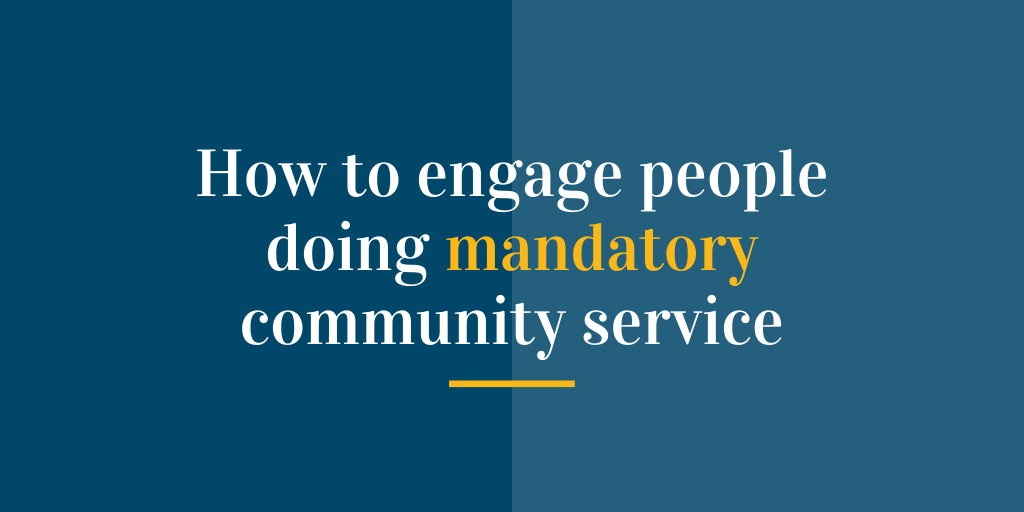
Eight per cent of Canada’s volunteers give back because they’re required to (Statistics Canada). Mandatory community service come in many forms, including students needing to complete a certain number of hours to graduate, people required to volunteer to receive or top up their social assistance and people ordered by the court to volunteer as an alternative form of sentencing.
Although there are challenges with engaging participants of mandatory community service programs, they can be a source of new energy for your organization. These programs also introduce people to volunteering who may not otherwise get involved.
Here are the five main items you need to consider when engaging people doing mandatory community service.
- Position design
Your obligation is to your mission, so assess the needs of your organization to determine if a mandatory community service program would be appropriate. Find out the program requirements, such as the number of hours, time period and scheduling, to see if it’s a good fit. One of the benefits of mandatory community service is that participants may be available during regular working hours, helping with hard-to-fill time slots.
Ensure the skills and knowledge you need are either available through the program or easy to teach. Consider developing new positions designed for the constraints of the program, such as one-off projects or positions that require no special skills. - Recruitment
Find out what kind of mandatory community service programs there are in your area and if any match your organization’s needs. Reach out to the organizations that coordinate the programs that seem like a good fit to learn more.
The actual experience can be a form of recruitment as participants who see how their work makes a difference may extend their commitment beyond the required amount of time. - Screening
Don’t just count on the screening done by the program – follow the 10 steps of screening to ensure the participant is appropriate for the specific position with your organization. Find out what screening the program does and let them know what other information you’ll need from participants.
In the interview, you may want to focus less on what the candidate wants or likes to do, and more on what they are willing or best qualified to do. - Orientation and training
Many participants may be unfamiliar with your organization and cause and have no prior experience volunteering or working. Orientation about your organization and the cause will be important. You should also include basic information about good work habits, personal presentation, dress codes, boundaries and consequences if they make a mistake or don’t meet performance standards. Be patient and offer written versions of all information so participants can refer to it later. Consider implementing a buddy system to match participants with more experienced volunteers. - Ongoing support and recognition
Participants will likely need more intensive, ongoing support than traditional volunteers, and their supervisors may need additional training and time to properly manage them. Be clear about performance standards and have a transparent process for corrective action if those standards aren’t being met. Determine how much time you can invest in improving their work and if there are any instances where you would terminate a participant. Additional record-keeping may be required for the program, particularly to document attendance.
Ensure there are opportunities for two-way feedback. This can help you improve your mandatory community service program for future participants. As you get to know participants’ abilities and interests, you can adapt the position to better meet the needs of the volunteer and your organization.
While more traditional forms of recognition may not be as meaningful to participants, it’s still important to acknowledge their contributions. A compliment, letter of reference and flexibility can go a long way to show your appreciation.
When done right, mandatory community service programs have the potential to increase the amount of support available to the non-profit sector. As with more traditional volunteer engagement, one size does not fit all when it comes to mandatory community service programs. Above all, get to know the participants so you can cultivate a mutually beneficial relationship.
